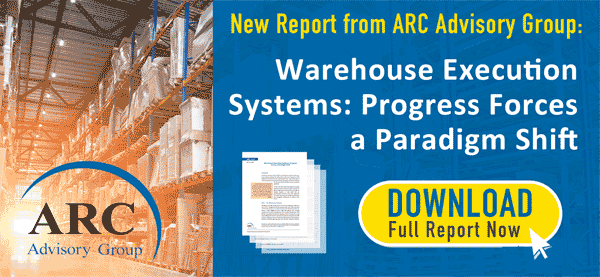Couch Report: CSCMP Edge 2020 Part 3, Breakout Sessions
For the last two weeks, I've authored what I called "Couch Reports" on the CSCMP Edge 2020 annual conference. That was in contrast to the "Trip Reports" I had written for almost 20 years, given that for obvious reasons the conference went fully virtual this year - and I attended from the comfort of my easy chair.
| GILMORE SAYS: |
Petco has shipping challenges, with an average weight per carton of over 20 pounds - free shipping for orders over $35.00 was a margin killer when sent from DCs.
WHAT DO YOU SAY?
Send us your
Feedback here
|
See CSCMP Edge 2020 and the Future of Conferences and CSCMP Edge 2020 Part 2, Keynote Sessions.
This week I am back with a report on some of the best breakout sessions I attended.
The first and best breakout session I saw involved use of so-called multi-echelon inventory optimization (MEIO) at Kraft Heinz.
The session began with some comments from moderator Hank Canitz, a director at supply chain software firm Logility.
MEIO can help companies better understanding of the causes of inventory, Canitz said.
The potential, he said, is to both lower inventories and achieve better service at the same time.
That is not possible under traditional supply chain trade off curve thinking. There are trade-offs between service and inventory, that thinking says, such that you can only move along that curve.
But another way to consider it, Canitz said - relative to what he calls efficient inventory frontier - is not to move along the curve, but to shift the entire curve, improving both inventory and service.
A key opportunity with MEIO is that most companies at best optimize inventory at the node level (e.g., plant of DC), or possibly at just one level of the supply chain (e.g., distribution centers), but not across levels or "echelons."
MEIO promises to right size inventories at all levels simultaneously, including work-in-progress and finished goods. It involves very sophisticated and frankly difficult to understand mathematics. At any given node or echelon, recommended inventories could actually go up, either to ensure desired service levels or because more inventory at one level (say manufacturing) might reduce it more in other levels.
Chris Hooker, senior manager, inventory management & analytics at Kraft Heinz, said his mission is to enhance Kraft Heinz's sales & operations planning process by determining the optimal inventories across the network that will support the S&OP plan - an exercise that does sometimes in fact involve raising previous inventory targets in some nodes/levels. But in the end, it is of course really about total inventory reduction.
Hooker picked as example the hugely popular Kraft Macaroni & Cheese. One important factor is that it has a long shelf life, providing some inventory management flexibility. Demand is also very stable, and Kraft Heinz has lots of demand history. So inventory planning should be easy, right?
But analysis showed despite these favorable attributes, service levels for Kraft Mac & Cheese were not where they should have been. This was even true when inventory levels were high. How could that be?
Hooker said it turned out that when the company had higher than normal inventories, outside storage was required. With limited capacity of shuttle trucks and labor to retrieve inventory from the satellite facilities, sometimes DCs fell behind - and customer orders had to be shorted even though there was in total plenty of product. Interesting.
The lesson, Hooker said, is that there is an optimal level of inventory for every SKU that needs to be identified.
I liked Hooker's maturity level model. At the low end, it starts with inventory rules of thumb. From there it progresses to single echelon inventory optimization, then internal multi-echelon I/O, and at the top of the curve, external multi-echelon I/O, meaning inventory optimization at trading partners too.
A word of warning, Hooker said, is this: multi-echelon I/O requires data, lots of (quality) data.
Getting to the end of the story, Kraft Heinz has implemented Logility's inventory optimization solution. The initiative has generated a total of $200 million in inventory savings, while improving services levels by 1.1%, equating to $240 million in incremental sales. Kraft also reduce product waste by $20 million.
Next, I attended a session in the NASSTRAC track on legal and legislative issues impacting the logistics industry. As is the case every year, there are quite a few issues at play.
The main speaker was Karyn Booth, who serves as NASSTRAC's general counsel. She covered a lot of ground.
New hours of service (HOS) rules from the Federal Motor Carrier Administration (FMSCA) went into effect Sept. 29. Not major changes, but they give drivers more flexibility. For example, previously the mandated 30 minute driver break after 8 hours of driving had to be truly off duty. Now that break can be used to perform non-driving tasks, whether that is getting gas, entering data into mobile computers, etc. Some safety groups, I will note, are still suing to stop the changes.
More consequentially, the state of California continues to pass laws impacting truck drivers, seemingly in contradiction to the federal authority to handle all trucking regulation, so that truckers and drivers don't have to deal with a patchwork of rules that vary in each state, really an impossible scenario to manage.
So in 2019, the FMCSA ruled that California's laws on meal and rest breaks were in conflict with Federal rules (less strict), and declared them invalid. However, the Teamsters have sued to overturn the FMCSA's ruling, and that suit is still pending. In California, anything can happen.
Another California issue of huge import is a new law referred to as AB-5. In great simplicity, it makes it extremely difficult to have anyone classified as a contractor rather than full employee. Notably, as part of the test, an employee must be doing work not connected with the employer's main business.
Independent owner-operators, common in California as in all states but especially seen among port drayage drivers, are obviously doing work directly involved in a carrier's main business, and thus under the law must be made employees.
This is a huge issue, as a carrier's cost likely will rise, the new employees might instantly unionized, and many independents truckers (and freelance writers and many other workers, by the way) don't want to be employees.
If the law stays as is, "It will have a significant impact on the economic model of the trucking industry," Booth said. It could also spread to other states.
The California Trucking Association sued to stop enforcement of the law, and a US District Court put a hold on the law. California in turn sued to overturn the lower court's decision. Oral arguments began in September.
Switching to ocean freight issues, Booth said that in April the US Federal Maritime Commission (FMC) stepped in on the growing issue of carriers and ports levying ever higher detention and demurrage charges on shippers and importers - even when shippers cannot get access to their containers.
The FMC did not issue specific rules, but rather a framework around what its thinking will be in ruling on disputes. That in part included language noting the benefits of such charges in keeping freight moving.
That said, the FMC will look at factors such as container availability, whether a cargo availability notice was sent, the specifics of the ports policies, the use of "transparent" terminology and others to determine if detention/demurrage charges are reasonable.
This just scratches the surface of all the legal issues - not the most exciting stuff, for sure, but this was a great summary.
Lastly for this week, I attended a session on "enabling omnichannel fulfilment optimization," presented by Christopher Fall, director, supply chain ecommerce and omni-fulfillment at pet supplies retailer Petco - a timely topic for sure.
Fall noted early on the need for omnichannel speed. For example, Petco launched curbside pick-up just 10 days after the start of COVID-19 crisis started.
Petco has shipping challenges, with an average weight per carton of over 20 pounds - free shipping for orders over $35.00 was a margin killer when sent from DCs. That led to a ship from store initiative.
Throughout his presentation, Fall emphasized the need to take action. He said there will likely be lots of omnichannel ideas, "But doing is a lot more important," he noted.
Petco wasn't going to ship from all stores, for a variety of reasons. The company also had to determine what geographies shipping stores should cover.
Fall said they knew there would be issues. Store inventory accuracy was not great, for example.
Petco found an unnamed partner who built a model of Petco's network. That helped a lot, but the data was imperfect. Knowing that, Petco still went live with several hundred stores over just a few days. There were glitches, but overall it was successful.
The key, he said, was to "Model until you fail better," in a continuous, iterative process.
In the end, despite issues and uncertainty, you have to launch, he said - but launch and learn. But knowing there will be issues, you do need a have developed a strategy for what to do about that.
In the end, Fall said, you need to quickly determine "What worked, what was good, a do more of the good," - with a bias towards action.
Did you attend the virtual CSCMP conference? How would rate the experience? Any reaction to these breakout summaries? Let us know your thoughts at the Feedback button or section below.
|











